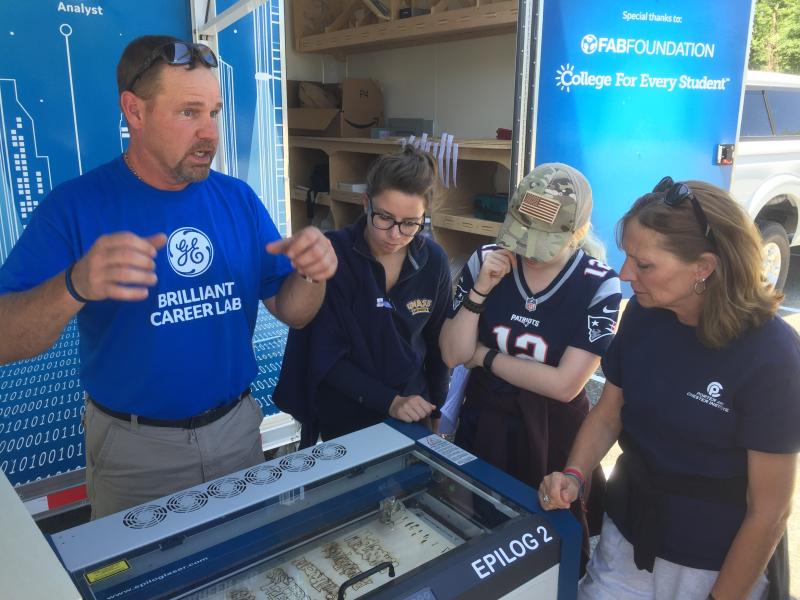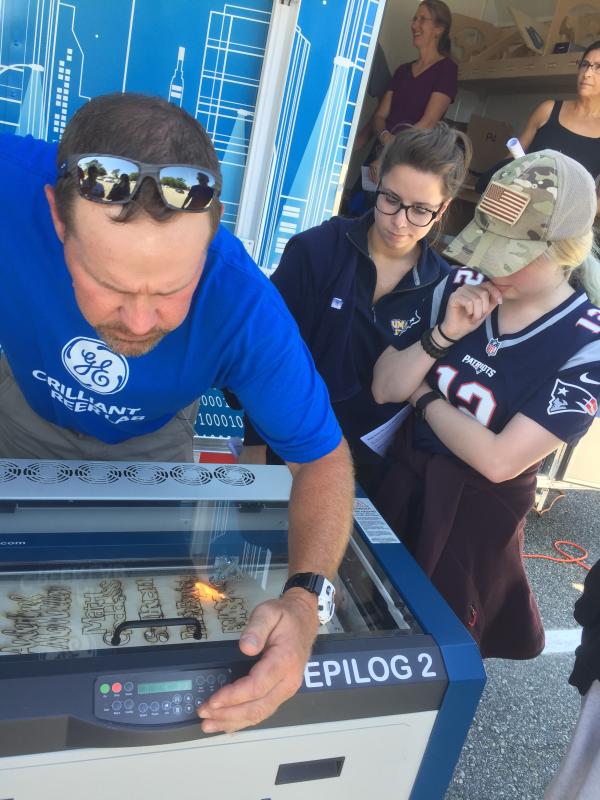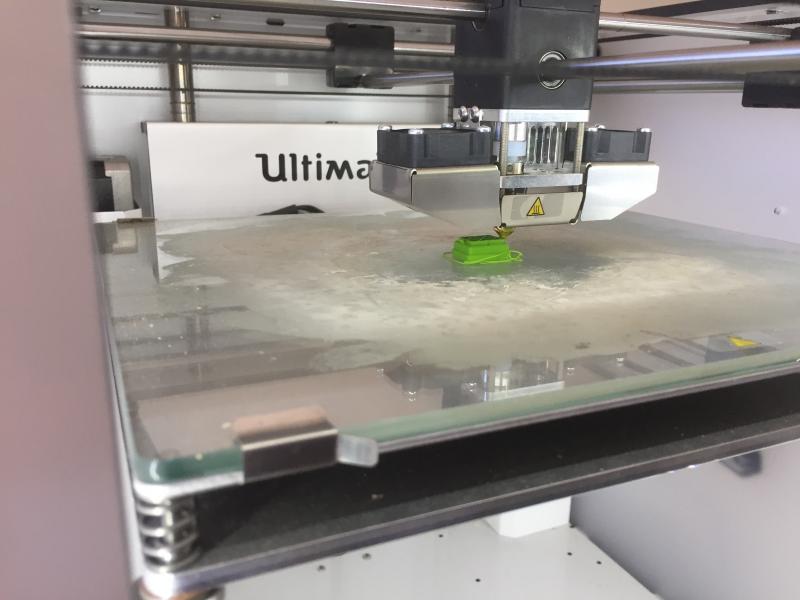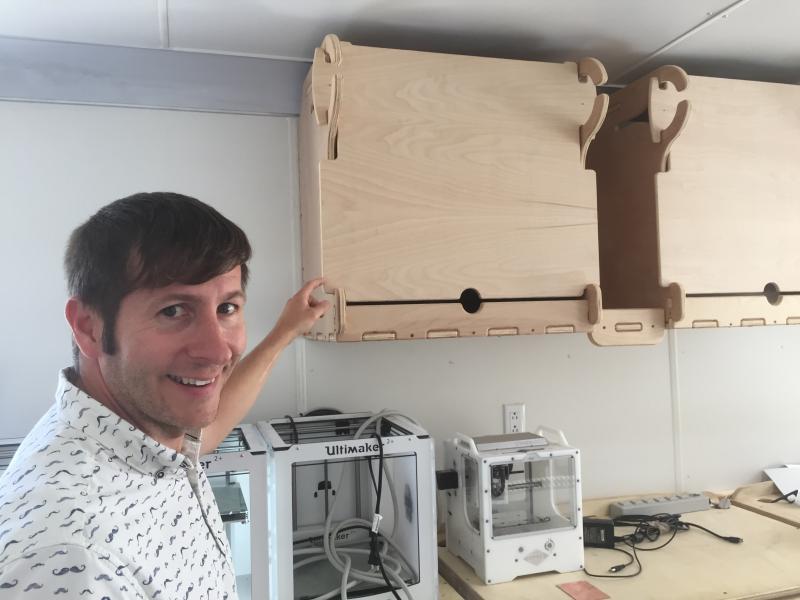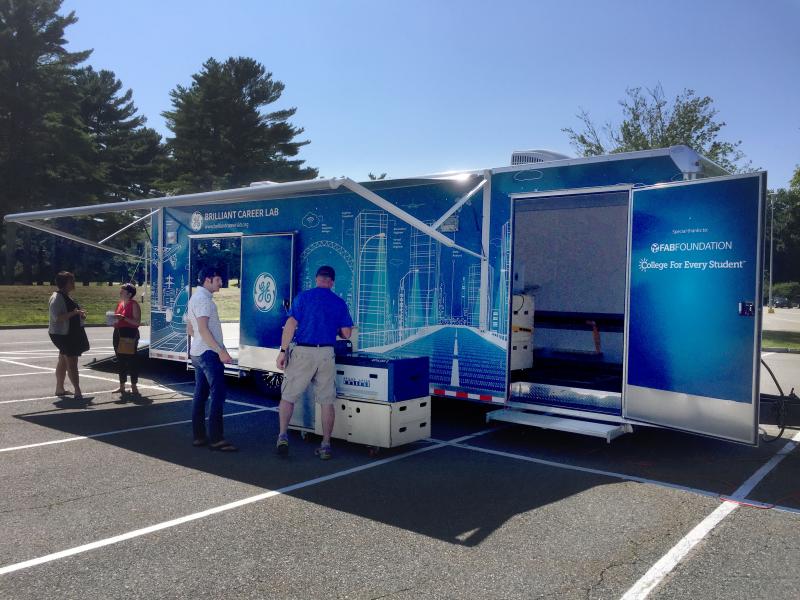Teachers learn how to use 3D printers, laser cutters for upcoming curriculum
Brian Purvis fiddled with a laser cutter while explaining to a group of surrounding teachers how to troubleshoot.
"Never promise your kids it'll work. It gives them an unrealistic idea about how life works," said Purvis, manager for General Electric's Brilliant Career Lab (aka "Fab Lab").
The lab — a trailer complete with 3D printers, circuits, and electronic kits — was set up on the University of Massachusetts Dartmouth campus on Aug. 9 for teachers participating in the South Coast STEM Education grant program. In the six-hour day, teachers designed nameplates on the computer, which they then brought to life with the laser cutter.
The end products were wooden cutouts reading "Math Goddess" and "Ms. Sullivan."
"It was a simple project to introduce them to the technology, and then they can extrapolate how they would use that in their math and science classes," explained Dr. Stephen Witzig from the university's Department of STEM Education & Teacher Development.
Wareham Middle School Math Department Chair Bonnie Lasorsa has already been able to apply what she's learned in the five years she's participated in the six-year grant program. In that time, Lasorsa has attended eight related conferences, taught science, technology, engineering, art, and math (STEAM) in China, and is bringing two 3D printers to Wareham's math department this year.
Also a teacher, Lasorsa said she starts every year surveying her students. Ninety percent don't like math, and another 90-percent say they "can't do it," she said.
"By eighth grade, a huge percentage of them have given up before they walk in the door," she said. "If all you're doing is problems on a worksheet, why does that matter? But if you can make something of it... It's thinking about it in a different way."
Dartmouth Middle School teacher Hugh O'Mara agreed. Breaking from a class he's taking at the university, he stopped in to check out the Fab Lab firsthand.
"It's more relevant, and it's more exciting. You can extend the learning outside of school," he said, explaining that he's already learned of three science-focused mobile apps that he plans to implement in his lessons. "Careers are going to be moving forward. It's life skills for students."
Witzig said that's the point of the STEM grant program, to arm teachers with new technology, content knowledge, and leadership skills. Most of the participating teachers work in high-need areas like Wareham, Fall River, and New Bedford, he added.
Through the grant, the 20 participating teachers have also received a laptop or iPad, a microprocessor, Arduino programming software, and an iRobot programmable robot, Witzig said. They all have also partaken in STEM-related internships; examples include working at a marine rescue sanctuary, aboard a science research vessel, and with wolves in Wyoming.
The South Coast STEM Education program is funded by a $2.86 million grant from the National Science Foundation/ Robert Noyce Teacher Scholarship Program. The program requires a five-year commitment from its participants in return for graduate coursework and professional development, according to the UMass Dartmouth website.



